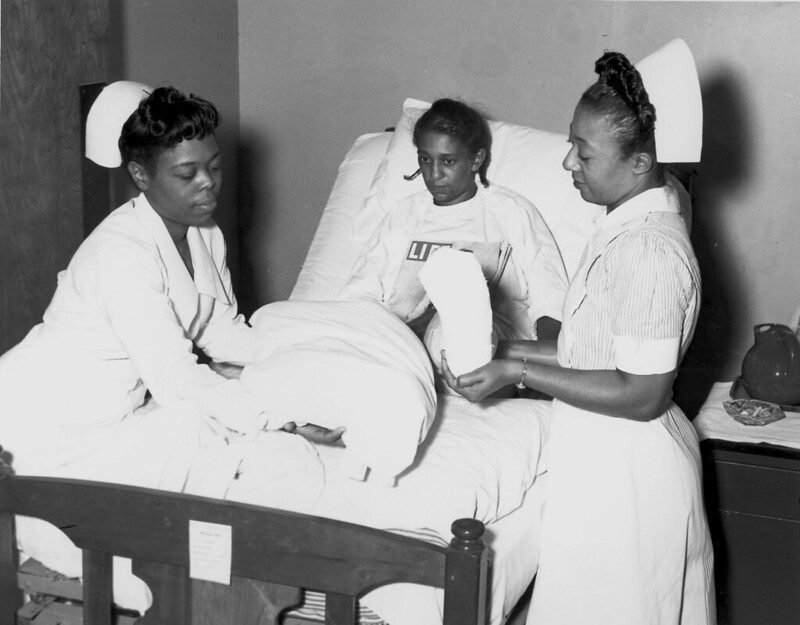Howard Fischer
Uppsala, Sweden

“Well, son, I’ll tell you:
Life for me ain’t been no crystal stair.”
– Langston Hughes, “Mother to Son”
At the start of the twentieth century, Dr. Hermann Biggs, chief of the New York City Department of Health, declared that tuberculosis (TB) was a reportable communicable disease. The city would be able to count the number of people infected with tuberculosis, as well as know where they lived. Ten thousand people died yearly from TB in the city. Many, said Biggs, were “ignorant indigent consumptives” who needed to be isolated in an infectious disease hospital. In 1913, ten years after Biggs’ explanation that the city would save a large sum of money by isolating the sick and protecting the well, Sea View Hospital opened. It was located on Staten Island, the least populous of New York City’s five boroughs.
By 1920, the annual TB mortality in New York City had decreased to 5,000 per year. It did not, however, drop any further. Nurses were leaving the hospital, citing low pay, long shifts, and the ever-present fear of infection. If replacement nurses were not found, the hospital would close and infectious patients would be released back into the city. The desperate solution was to lure Black nurses from the southern US to Sea View. The story of Sea View, from its opening in 1913 to its closing in 1961, is told mainly by following the career of Edna Sutton, RN. Sutton received her nursing education at a Black nursing school in Georgia. Unfortunately, there were only two small Black hospitals in her hometown of Savannah, and they had enough nurses. Sutton worked as a secretary for two years, until nurse recruiters came to the South offering additional training, tuition-free, at Harlem Hospital in Manhattan, and a job in one of the four non-segregated New York City municipal hospitals. The remaining twenty-five hospitals were segregated.
The story of these nurses, the racism they encountered in their training program in New York with segregated dining rooms and restrictions on renting or buying houses on most of Staten Island, and the initial refusal of the US Army to accept Black nurses for overseas active duty gets blended into a background of events in the world of medical and pharmacological research and municipal hospital politics. The Depression, the Louis-Schmeling boxing matches, the war in Europe, the war in the Pacific, and rationing at home are all part of the story.
The Black nurses participated in the trials of successive “wonder drugs” used to treat TB. Streptomycin, derived from the soil microbe Streptomyces griseus, was tried in 1944 with good results for some patients. By 1947, Mycobacterium tuberculosis had developed resistance to the expensive drug, which also had a number of unpleasant side effects. An eighteen-month-long study in the UK showed that after six months of treatment, bacterial resistance made streptomycin no more effective than a placebo. In 1950, treatment with para-aminosalicylic acid was added to the single-antibiotic streptomycin treatment. This new “wonder drug” produced some cures and negative sputum cultures. But by 1951, patients treated with this two-drug therapy were having relapses. That year, a German drug, TB-1, was modified to produce isoniazide (isonicotinic acid hydrazide, INH). This drug was tested with ninety very ill patients at Sea View. The nurses meticulously noted side effects and patient responses. There was much improvement as well as plenty of side effects, including vertigo, shaking, and even mania. After six months on INH alone, patients had relapses with disease recurrence. Triple therapy with streptomycin + para-aminosalicylic acid + INH was started in 1952, and produced a 95% permanent cure rate. The hospital closed in 1961.
This informative book showed how Black nurses suffered indignities and contempt but continued to work as professionals for their sometimes unappreciative patients. I have few, minor complaints about the author’s style. She thought it necessary to define “chronic hypertension,” but not a long list of other medical terms. In a list of “war-ravaged places,” Switzerland is erroneously included. She uses repeatedly a word that vexes me for its vagueness: “issues,” as in a patient having cardiac or emotional “issues.” None of this, however, really detracts from this interesting and wide-ranging account.
The Black Angels: The Untold Story of the Nurses Who Helped Cure Tuberculosis
Maria Smilios
London: Virago Press, 2023
HOWARD FISCHER, M.D., was a professor of pediatrics at Wayne State University School of Medicine, Detroit, Michigan.

Leave a Reply